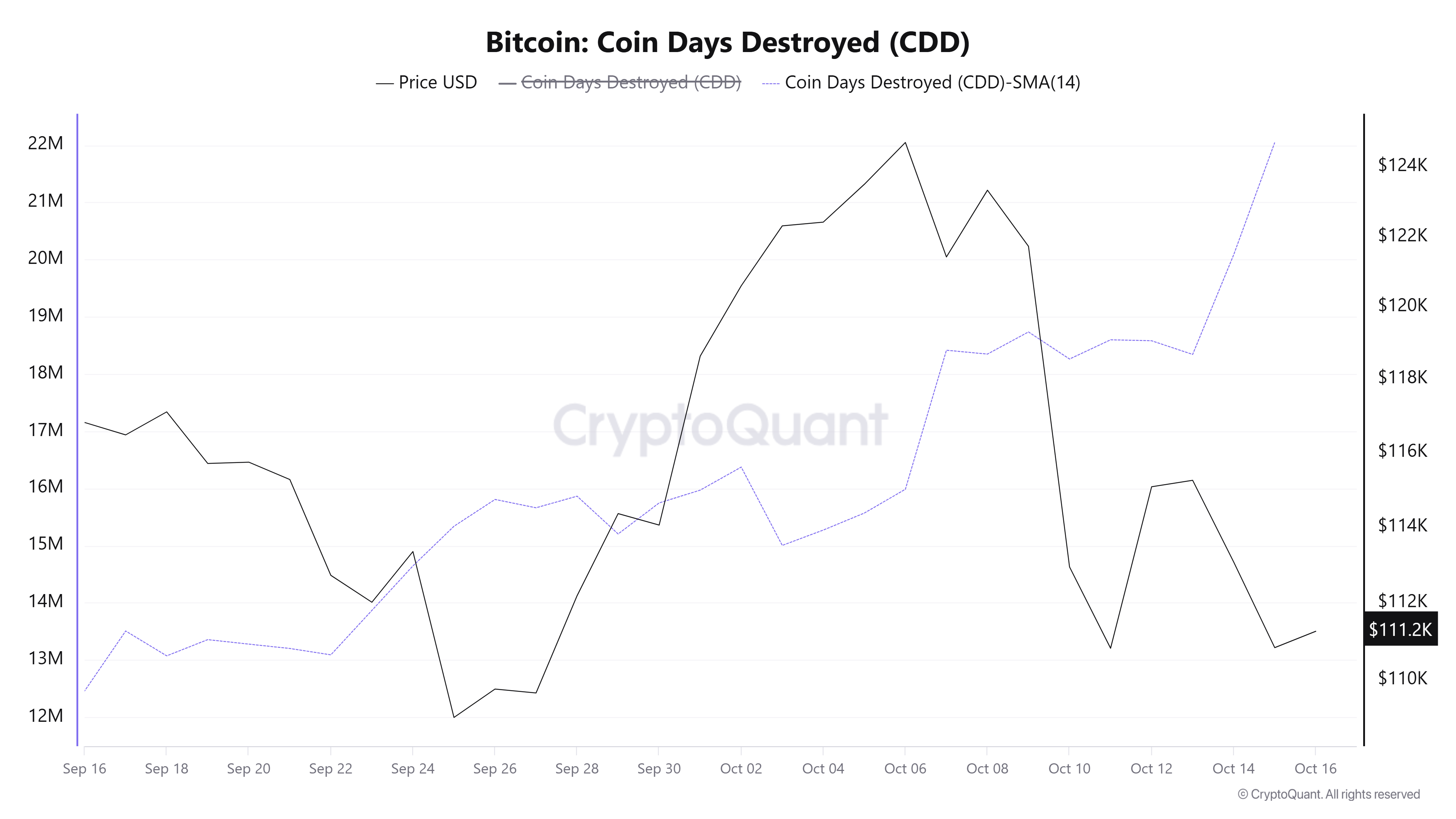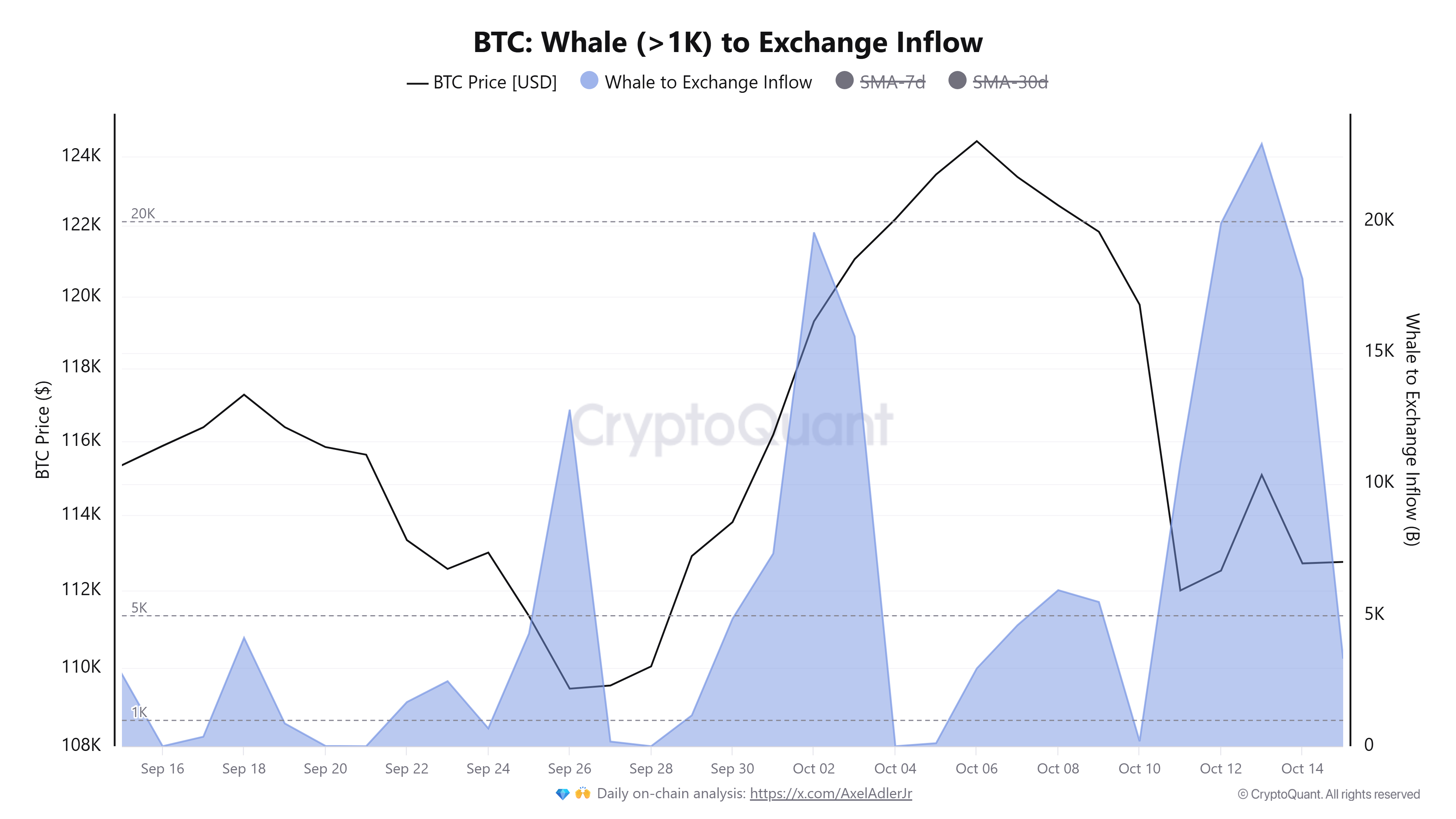Ah, the market crash of October 11-such a delight for retail investors! And, as if that wasn’t enough drama, it seems the Bitcoin whales are up to something. Recent on-chain data has revealed that these mighty creatures have undergone a rather curious metamorphosis. Yes, three major behavioral shifts, and no, it’s not what you expect!
What exactly are these changes? And can the market possibly adapt to their new, unpredictable ways? Read on, my dear reader, for a most enlightening (and slightly sarcastic) analysis.
1. Dormant Whales Are Waking Up
It appears that after the crash, the long-dormant wallets of Bitcoin whales have decided to stir from their slumber. How charming. Could it be that they’ve been feeling the pressure to act, as one does when the market throws a little tantrum? On October 14, a delightful 14,000 BTC that had been resting for 12-18 months were suddenly moved on-chain.
But wait-there’s more! On October 15, a further 4,690 BTC from the 3-5 year age group were reactivated. And, let’s not forget the pièce de résistance: since the start of 2025, almost 892,643 BTC from this cohort have been moved, which is, of course, a significant chunk of the total supply.
The 2-3-year-olds weren’t about to be left behind, either. A mere 7,343 BTC were transferred this week, and today, one very special OG whale moved 2,000 BTC and is still holding a whopping 46,000 BTC-worth more than $5 billion, if you’re keeping track.
As a result, Coin Days Destroyed (CDD) skyrocketed this week, hitting its highest level in a month. Truly, this is the highest reading since July, when whale reactivation was responsible for Bitcoin’s plummet from $120,000 to $112,000. How quaint.
“Watch out, selling could have resumed…” – Analyst Darkfost, ever the optimist, warns.
2. Increased Whale Inflows
Now, moving on to the dramatic increase in whale inflows, which, as we all know, is always a sign of *good* things, right? Data from CryptoQuant shows that after the crash on October 11, inflows from wallets holding over 1,000 BTC surged.
On October 15, analyst Maartunn-bless his heart-revealed that a whopping 17,184 BTC were sent to exchanges by these large wallets, marking the highest transfer level since the beginning of the month. And, as we all know, when whales send BTC to exchanges, it often means they’re about to sell, thus adding to the lovely selling pressure we’ve all come to enjoy.
3. Higher Whale Transaction Ratios on Exchanges
Lastly, let us address the increase in the Exchange Whale Ratio, which measures how much of the trading activity on exchanges is controlled by these glorious whales. A higher ratio, naturally, suggests that whales are making larger transactions, potentially adding more fuel to the ever-flammable fire of market volatility.
Since the October 11 crash, this ratio has spiked to its highest level in a month. How thrilling! Such spikes often lead to delightful market volatility, as large whale trades can easily stir up liquidity like a storm in a teacup.
It’s all part of a typical redistribution phase, where Bitcoin is lovingly passed from one set of whales to the next-mostly to new whales, such as ETF funds and institutional accumulators. How heartwarming.
“This is just typical redistribution, similar to what we’ve seen in previous cycles. Nothing else to see here.” – Analyst Maartunn, ever the voice of reason.
However, let us not get too carried away. If these behaviors persist-especially if whale inflows remain high or the whale ratios rise sharply-it could exert significant pressure on prices and lead to more delightful volatility. Such fun!
Read More
- USD VES PREDICTION
- USD PLN PREDICTION
- FIL PREDICTION. FIL cryptocurrency
- EUR CNY PREDICTION
- JUP PREDICTION. JUP cryptocurrency
- BTC PREDICTION. BTC cryptocurrency
- INJ PREDICTION. INJ cryptocurrency
- STETH PREDICTION. STETH cryptocurrency
- NEAR PREDICTION. NEAR cryptocurrency
- USD MYR PREDICTION
2025-10-16 15:44


